@tstavely, I’ve been doing some research and pursuing advice on our disintegrating Turkey Red doughs. Most of what I learned is what I think we already knew, which is that fresh milled Turkey — and other fresh milled flour — tends to develop more quickly than commercially milled flours. A number of techniques for balancing the fermentation rates were very generously shared with me and I want to pay that forward on this forum in case it may benefit someone here. I’ll go over the things I tried as well as my observations in case you are able to adapt some of them for your purposes, which are very different from mine.
1. Shorter autolyse with salt. No longer than 1 hour (I keep mine to 45 minutes) with salt added to slow the enzymatic processes. One caution I was given was that If the formula uses a blend of fresh and commercially milled flours, you shouldn’t autolyse them together. Either don’t autolyse the commercial flour at all or do it separately.
In my case, I was making 100% WW and wanted to soften the bran, so a shorter autolyse wasn’t going to get me where I wanted to go. To get around this, I ended up sifting out the “bran” and soaking it separately for about 2½ hours, while the flour and salt autolysed for only 45 minutes.
Keeping track of multiple soakers and autolyses might be more trouble than it’s worth, so that’s something to consider.
2. Reduce or eliminate sugars as they will accelerate fermentation. I tried this and it helped slow things down; however, I felt that it had too much of a negative impact on the flavor. Fortunately, the combination of other measures taken to slow down fermentation seemed to be sufficient, so I was able to get away without cutting the sugar.
3. Reduce the amount of yeast. Reducing the yeast by half helped enormously. I understand that you are leavening with sourdough, so this won’t necessarily apply to you. I’ll probably readjust the amount come winter.
4. Be extra careful not to tear any gluten strands. While bakers should always be careful about this, one thought I heard was that home milled or heritage flours might be less able than commercially milled flours to “recover” from incidental damage to the gluten network. Make sure the dough is extensible before doing any kneading, stretch and folds, or the like. (If the dough is not sufficiently extensible at the end of the autolyse phase, add a bit a water, wait, then try again.) Coils folds may be preferable to stretch & folds.
These techniques have significantly shortened the overall timeframe and helped my 100% Turkey whole wheat dough hold together considerably better. (The autolyse has been reduced to a third of the original time. The bulk phase is about the same as the time specified (maybe a little faster) in the original recipe, and the proof now takes about half the time specified in the recipe. These times will probably change again with the coming of colder weather.) The bottom line is that I watch the dough carefully and if it seems to be developing too quickly, I move it along to the next step. I try to stay in front of it and not fall behind, if that makes sense. I don’t know if one of these fast-moving doughs would hold up through an extended retardation — but if I tried it, I’d get it in the fridge early in the process and make sure the fridge was good and cold.
Hopefully you will find something here to help with your Turkey Red doughs. That said, I’ve made so much of this 100% WW sandwich bread in the past few weeks that I don’t care if I have any more for a while, haha! I’ll probably be sticking to ciabattas and sourdoughs for a while  .
.
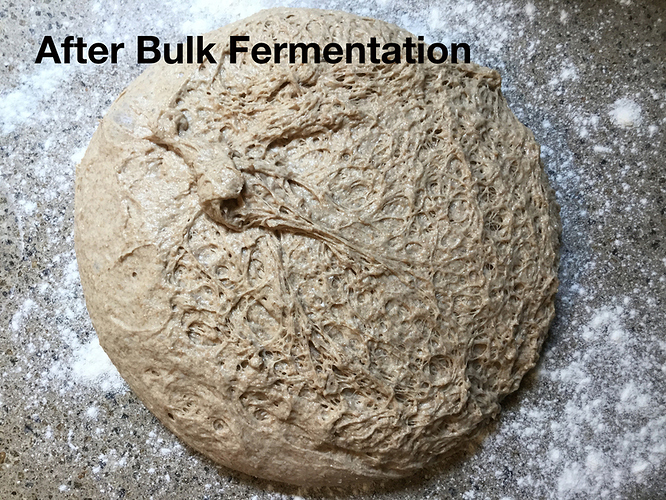
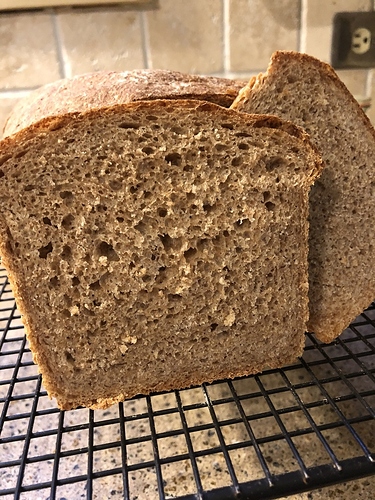

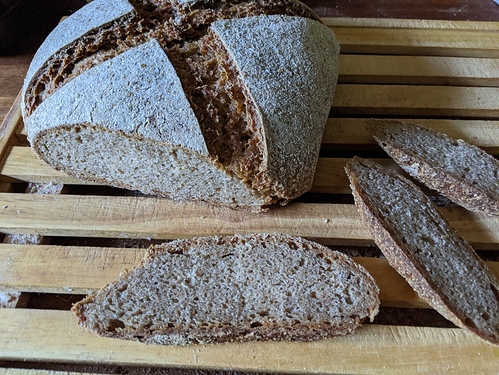
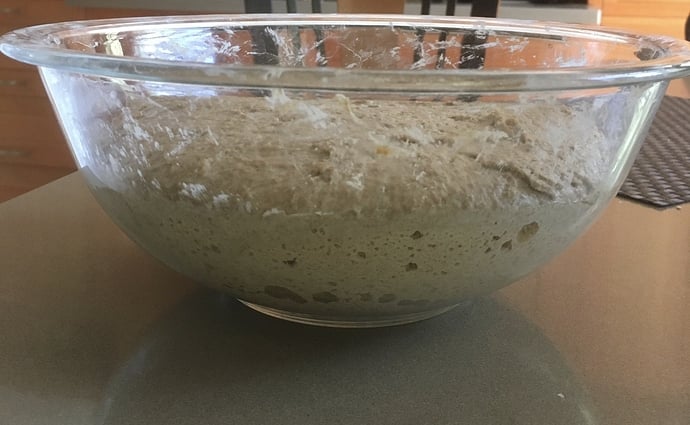

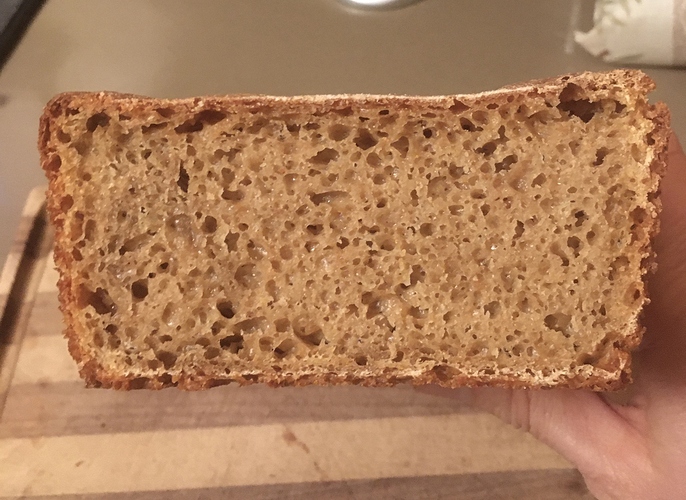
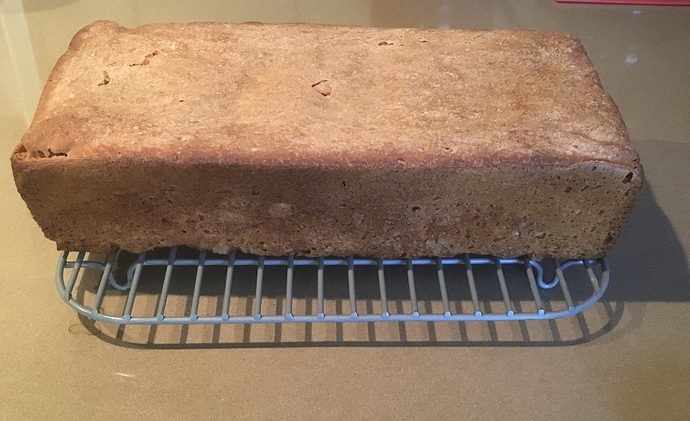
 .
.